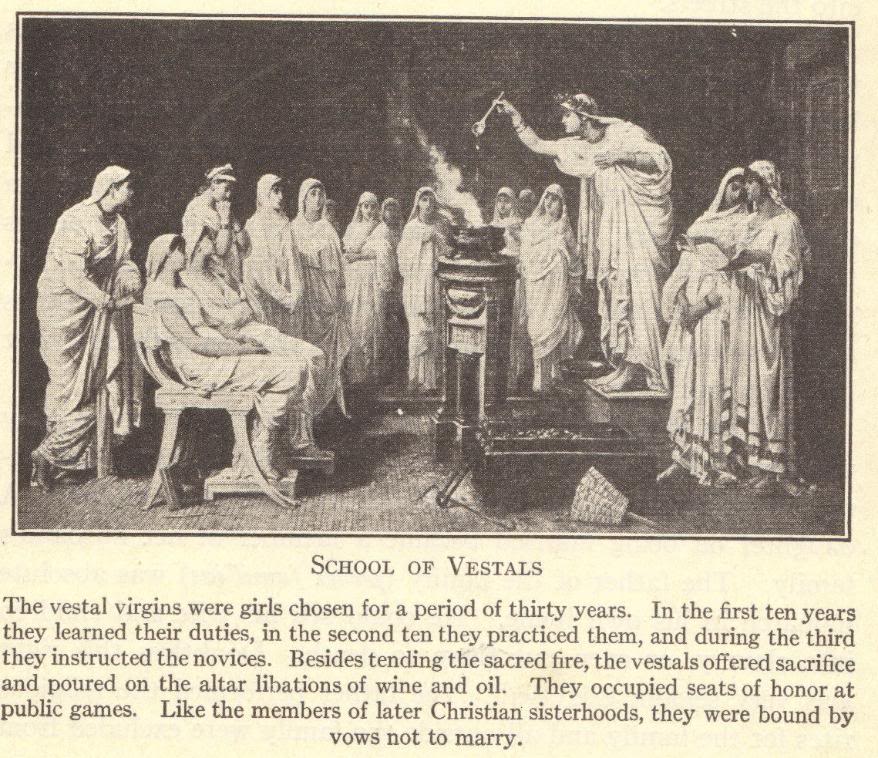| Share the learning joy! |
The Vestal Virgins of Ancient Rome |
| www.learnquestnest.com > World History > Ancient Rome > Ancient Rome Worksheets |
 The Vestal Virgins
were a group of priestesses whose duty was to perform certain
rituals in honor of the Roman goddess Vesta.
The most important of these rituals was the tending of
the sacred fire. Vesta was the goddess of the hearth.[1]
Vesta's sacred fire symbolized the
hearth of Rome itself.
Vestal Virgins were widely respected by the people of Rome. Vestals were reserved seats at public events. Emperors such as Augustus never failed to mention the Vestals when speaking publicly. Politically, the Vestals were able to exercise influence over the Roman government. This political influence was particularly important during a time when women could not vote or hold public office, and were generally kept away from public life. According to tradition, the Vestal order was established by Rome’s second king, Numa Pompilius (reigned 717-673 BCE). The Vestals remained a well-respected order as the Roman Republic was established in 509 BCE, and as Augustus ushered in the age of the Roman Empire after 30 BCE. It was not until Christianity dominated Rome that pagan religious groups (or cults, as they are commonly called), such as the Vestal Virgins, came under threat. In 313 CE, Emperor Constantine granted religious toleration to Christians through the Edict of Milan. The emperor himself converted to Christianity on his deathbed. In 380 CE, Emperor Theodosius I made Christianity the official religion of Rome. In 394 CE, Theodosius I ordered that the sacred fire at last be extinguished, and the Vestal Virgins were disbanded.
The Vestal Virgins had been linked to Rome’s prosperity for over 1,000 years.
In the decades following Rome’s conversion to
Christianity, and the disbanding of pagan cults, the empire crumbled due to
internal pressures and barbarian invasions.
Many Romans blamed Rome’s decline on the
failure to worship the gods and goddesses who had defended Rome
for more than a millennium.
According to many, the gods were making Rome pay for its
disloyalty. The
early Christian writer, St. Augustine, was motivated to write
The City of God to
quiet these fears.
[1] A hearth is a
traditional home fireplace used for cooking, usually
made of stone or brick, and quite large.
Since ancient times, a hearth has symbolized the
warmth and comfort of a family home. |
1. What factors motivated young women to become Vestal Virgins? |
2. Imagine that you are a Roman pagan of 394 CE, witnessing the
disbanding of the Vestals. How might you react? How
might your reaction change if you were a Christian? |
Click
here
to print. |
 |
|---|
| Ancient Rome Books and Films | Ancient Rome Outlines and Powerpoints |
| Ancient Rome Maps and Pictures | Ancient Rome Online Study Games |
| Ancient Rome Miscellany | Ancient Rome Worksheets |











